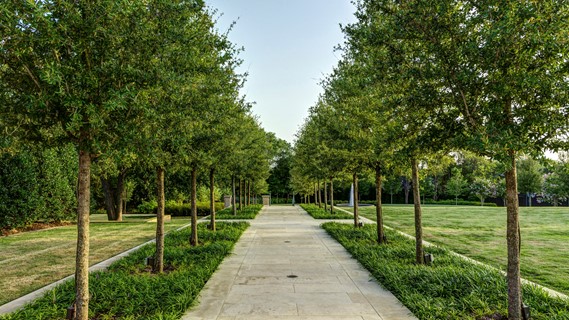What Does Hilton Head Landscapes Mean?
What Does Hilton Head Landscapes Mean?
Blog Article
Some Known Details About Hilton Head Landscapes
Table of ContentsThe 6-Minute Rule for Hilton Head LandscapesGet This Report about Hilton Head LandscapesThe Best Guide To Hilton Head LandscapesHilton Head Landscapes - An Overview8 Simple Techniques For Hilton Head LandscapesGetting The Hilton Head Landscapes To WorkHow Hilton Head Landscapes can Save You Time, Stress, and Money.
Line creates all kinds and patterns and can be made use of in a range of ways in the landscape. Line in the landscape is developed by the edge between 2 materials, the summary or silhouette of a kind, or a long straight function. Lines are an effective device for the developer due to the fact that they can be utilized to create a boundless range of shapes and types, and they manage movement of the eye and the body.

Lines in the landscape. The properties of lines establish how people respond to the landscape, both emotionally and physically.
A Biased View of Hilton Head Landscapes
Bent lines develop an informal, natural, relaxed personality that is associated much more with nature and asymmetrical balance. Rounded lines relocate the eye at a slower rate and add enigma to the room by developing covert sights.
Upright lines in the landscape include tall, narrow plant material, such as trees, or tall structures, such as an arbor or a bird residence on a pole. Horizontal lines move the eye along the ground aircraft and can make a room really feel bigger. Reduced lines are much more subdued and produce a sensation of remainder or repose.
The smart Trick of Hilton Head Landscapes That Nobody is Talking About
Lines are likewise created by the vertical kinds of developed attributes and plant product. There are three main line types that create type in the landscape: bedlines, hardscape lines, and plant lines.
Bedlines link plant product to your house and hardscape because the eye complies with the line, moving the stare through the landscape. Hardscape lines are developed by the edge of the hardscape, which defines the constructed structure. Line can likewise be developed by long and slim products, such as a fencing or wall.
Rumored Buzz on Hilton Head Landscapes
Form is discovered in both hardscape and plants, and it is generally the leading visual element that spatially organizes the landscape and typically establishes the design of the yard. The kind of frameworks, plant beds, and yard accessories also establishes the general type style of the yard. Official, geometric types consist of circles, squares, and polygons.
Plants develop form in the yard with their lays out or silhouettes, however type can also be defined by a void or adverse area between plants - Landscapers near me (https://on.soundcloud.com/9G2jvdoH5UDcTrYM8). Circles can be full circles, or they can be split right into fifty percent circles or circle sections and incorporated with lines to produce arcs and tangents
The Only Guide for Hilton Head Landscapes
Circles are a solid design kind since the eye is constantly drawn to the facility, which can be utilized to stress a focal point or attach other forms. Circular types in hardscape and grass next page panels.
The square kind can also be segmented and secondhand repetitively to create a grid pattern. Unlike circles, squares are more powerful on the sides, which can be lined up or overlapped to develop one-of-a-kind patterns and even more complex kinds.
Twisting lines frequently resemble the all-natural course of rivers or streams and can be called smooth lines with deeply curved wavinesses. Twisting lines (Figure 3) function well for pathways, plant bedlines, and completely dry stream beds. Meandering lines can add rate of interest and secret to a yard by leading viewers around corners to find new views and spaces.
The 30-Second Trick For Hilton Head Landscapes

Common plant forms are well established and standard, as kind is the most constant and identifiable feature of plants. Kind can also be created through the massing of plants, where the overall mass produces a different form than a private plant.
An extremely contrasting form should be made use of with careone or more work well as a centerpiece, however too several wreak havoc. Natural plant kinds, rather than over-trimmed kinds, ought to establish the bulk of the structure. The importance of overall form is essentially based on the watching perspectivethe form of a tree can show up quite different to a person standing under the cover versus viewing the tree from a distance in an open area.
Examine This Report on Hilton Head Landscapes
Plant types additionally produce and define the gap or open rooms between the plants, creating either convex or scooped types in deep spaces. High-arching tree branches commonly produce a concave open area under the branches, and a rounded canopy with reduced branches fills the room to create a convex form outdoors space under the tree.

Report this page